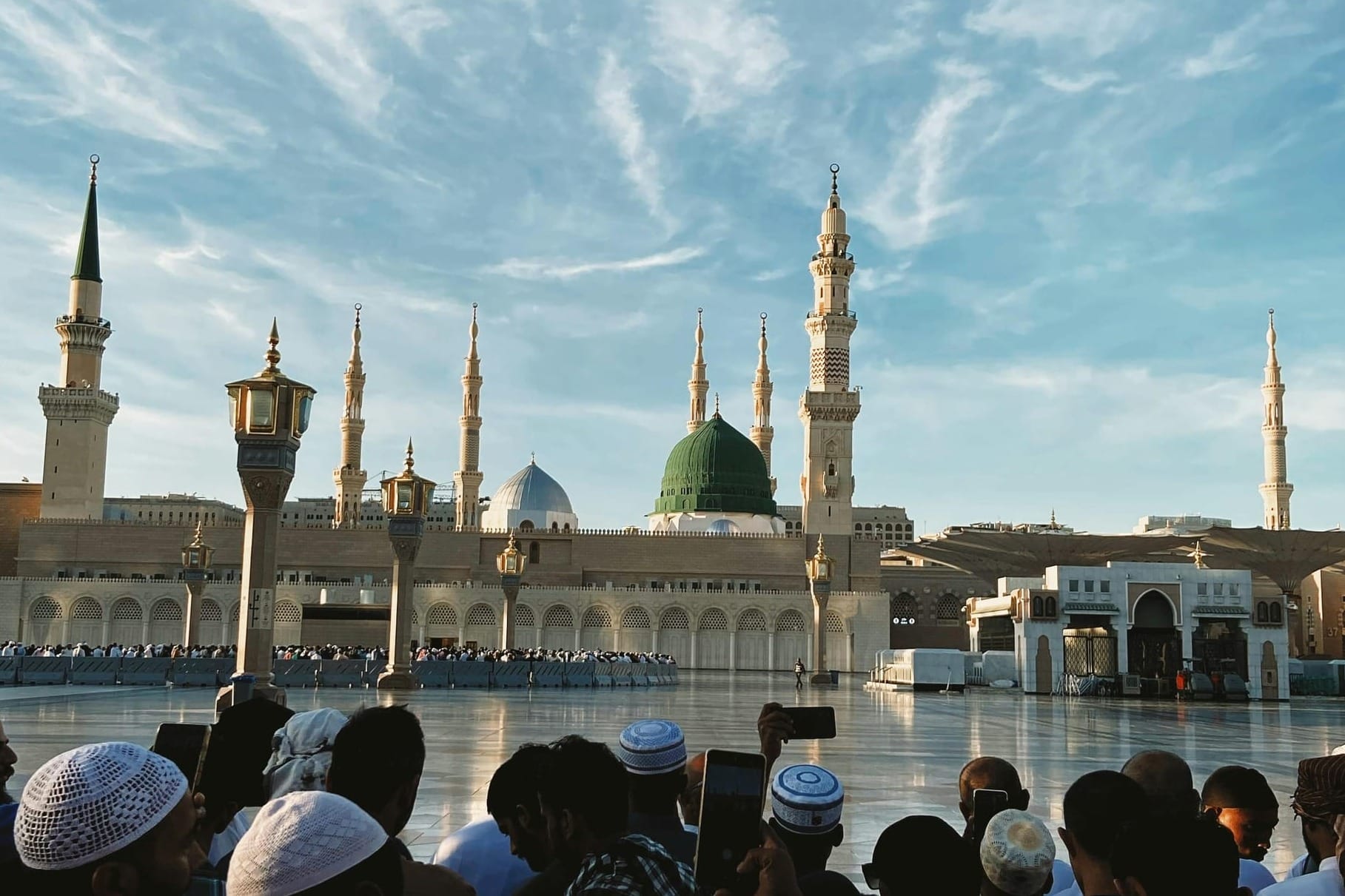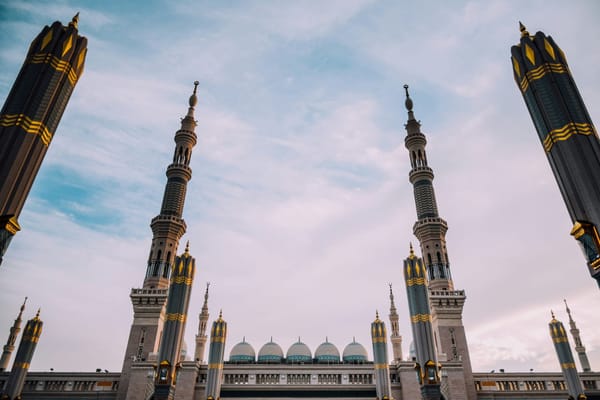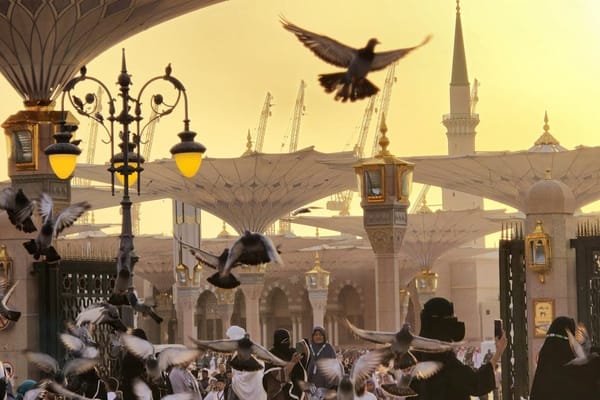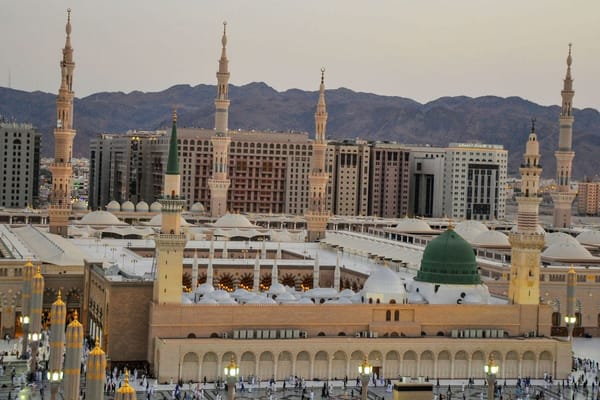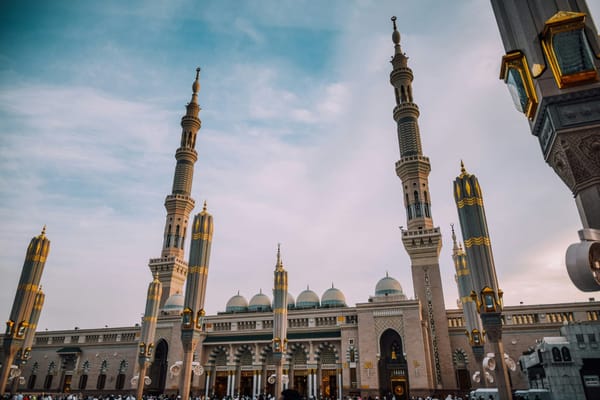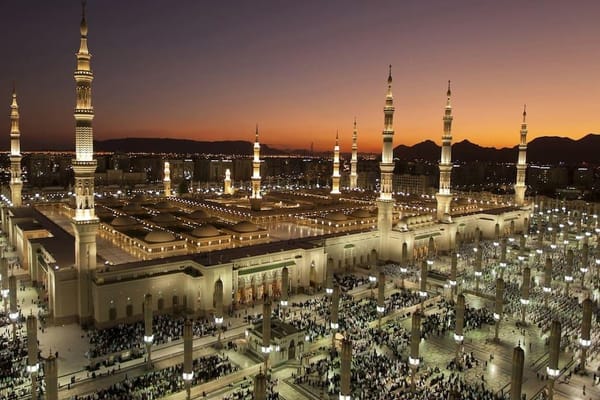Visiting Masjid-e-Nabawi—also known as the Prophet’s Mosque—is one of the most spiritually moving experiences for any Muslim. Located in the heart of Madinah, this sacred sanctuary invites millions of visitors each year to connect deeply with their faith, walk in the footsteps of the Prophet Muhammad (ﷺ), and find peace in a place like no other.
Whether you're planning your first visit or returning for another spiritual retreat, here's everything you need to know to make your journey to Masjid un Nabawi smooth, respectful, and truly unforgettable.
Before You Go: Practical & Spiritual Prep
Think of this journey as both physical and spiritual. A little preparation goes a long way.
Set Your Intention (Niyyah)
This might sound simple, but it’s everything. Make your intention purely for the sake of Allah—to visit His Messenger (ﷺ), to pray in this blessed mosque, and to deepen your connection to your faith.
Get Ready Physically
- Perform ghusl (ritual purification) before you head out.
- Dress modestly: Men should wear clean, loose clothing, and women should wear abayas and hijabs. Fragrances are okay for men but should be avoided by women in public spaces.
- Bring along a prayer mat, water bottle, and a small bag for your shoes—trust us, you’ll want it.
Download the Right Apps
- Nusuk App: Required for booking a time slot to visit Ar-Rawdah (more on that soon).
- Tawakkalna Services: Still used for various logistics inside the Kingdom.
- Maps or mosque guides: To help you navigate the vast prayer areas.
Why Masjid al Nabawi Is So Special
Let’s start with the heart of it all—why this mosque matters.
Masjid al Nabawi was built by the Prophet Muhammad (ﷺ) himself after his migration to Madinah in 622 CE. It’s not just a mosque; it's where the Prophet (ﷺ) is buried, alongside his closest companions, Abu Bakr and Umar (may Allah be pleased with them). The site is a living piece of Islamic history, a spiritual anchor, and a symbol of unity for Muslims around the world.
Over the centuries, the mosque has expanded into a breathtaking architectural masterpiece—seamlessly blending tradition with modern marvels like sliding domes, underground air conditioning, and shaded umbrellas that bloom like flowers during the day.
But above all, this place is about presence—of the Prophet (ﷺ), of prayer, and of peace.
Entering Al Nabawi Masjid: What to Do First
The first steps into Al Nabawi are unlike anything else. There's a hush in the air, a feeling of awe that touches even the busiest of hearts.
The Dua Upon Entering
Step in with your right foot, and say this beautiful supplication:
“Bismillah, was-salatu was-salamu 'ala Rasoolillah. Allahumma ighfir li dhunubi waftah li abwaba rahmatik.”
(In the name of Allah, and peace and blessings be upon the Messenger of Allah. O Allah, forgive my sins and open for me the doors of Your mercy.)
Two Rak’ahs of Greeting
It’s Sunnah to pray two units of prayer (Tahiyyat al-Masjid) upon entering. If you get a chance to do it inside Ar-Rawdah, that’s even better—but don’t worry if not. The entire mosque is sacred.
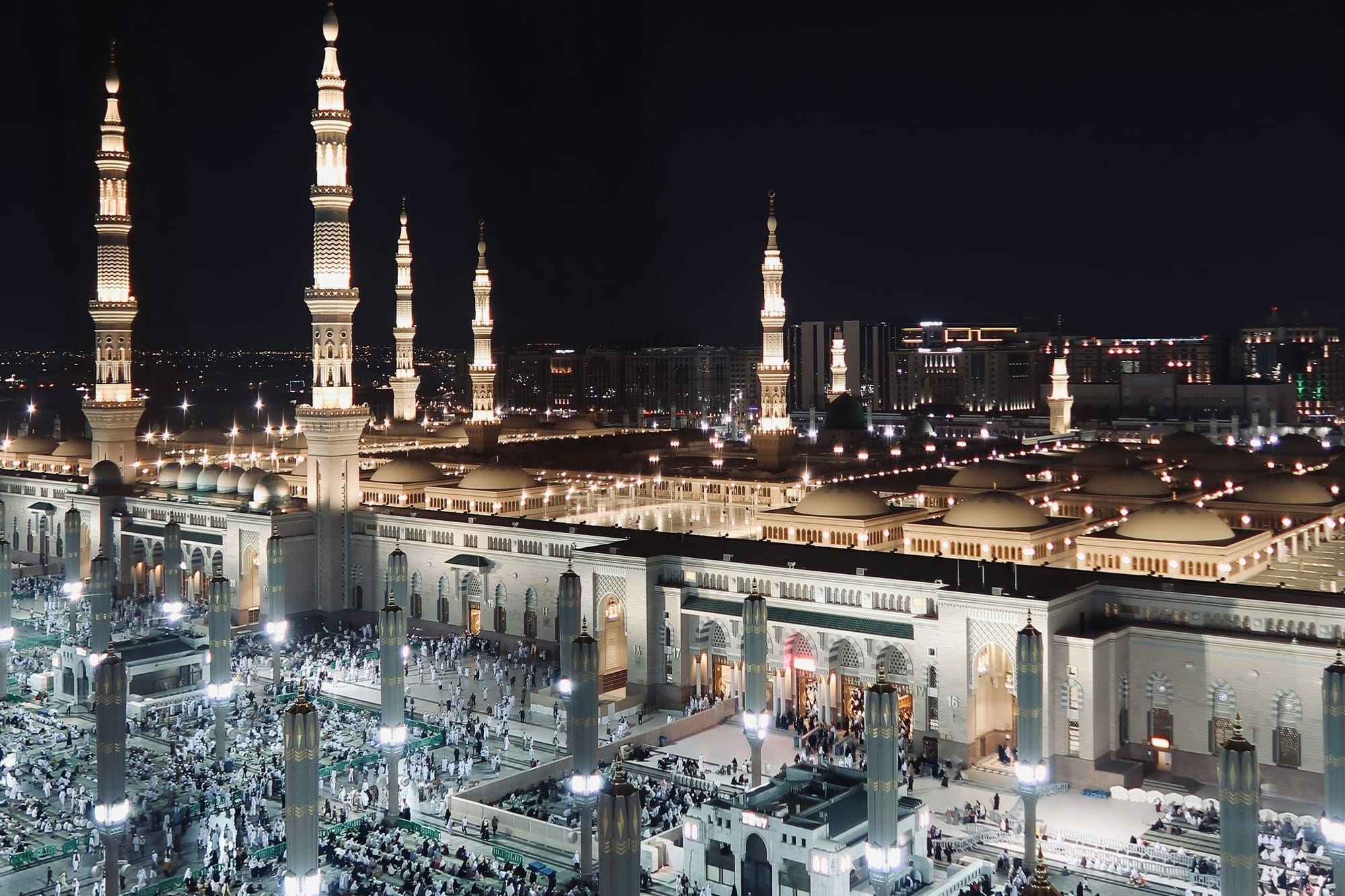
What Is the Benefit of Praying in Masjid al Nabawi?
Praying in Masjid-e-Nabawi carries immense spiritual reward. The Prophet Muhammad (ﷺ) said that one prayer offered in his mosque is better than 1,000 prayers in any other mosque, except for Masjid al-Haram in Makkah, where the reward is multiplied 100,000 times.
What to Read Inside Masjid un-Nabawi?
Time inside the mosque is a precious opportunity to reflect, worship, and connect with the words of Allah and His Messenger ﷺ. If you’re unsure what to focus on during your time there, here are a few suggestions:
Qur’an
- Reading the Qur’an inside Masjid Nabawi is among the most rewarding acts. Use your own copy or borrow one from the shelves located throughout the mosque.
- Focus on Surahs like Ya-Sin, Al-Rahman, and Al-Mulk—they’re short, powerful, and deeply spiritual.
Dhikr and Salawat
- Engage in quiet remembrance of Allah (dhikr) and send salawat (blessings) upon the Prophet.
Seerah and Hadith Collections
- Reading about the life of the Prophet (ﷺ) while seated in the very mosque he built adds emotional and spiritual depth.
- If you're visiting the mosque library or using an app, look for any seerah (biography) books in your language.
What's the Most Notable Feature of Masjid un-Nabawi?
Ask anyone, and most will say it’s the Green Dome—a radiant symbol of Madinah and the resting place of the Prophet Muhammad (ﷺ).
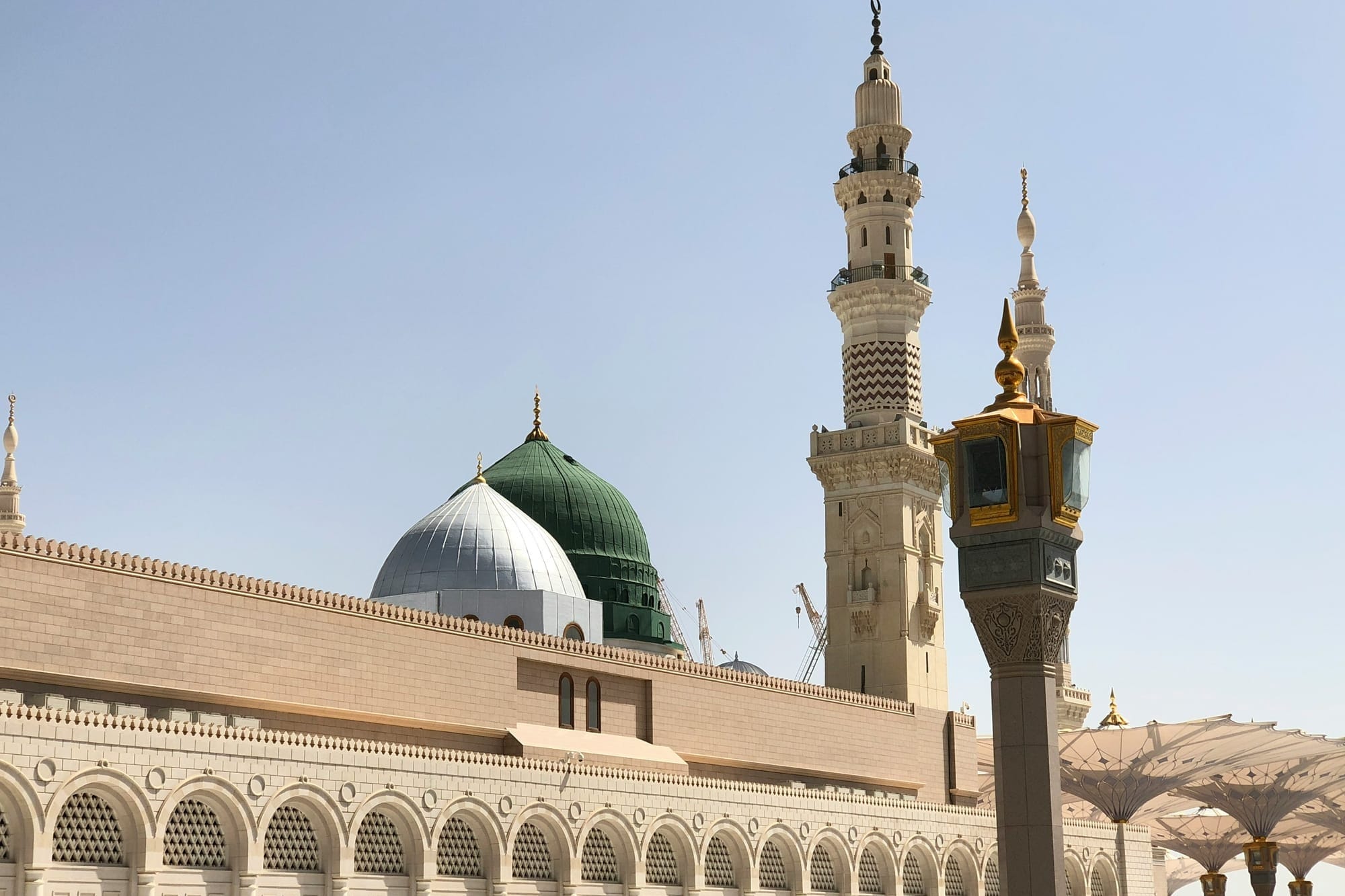
Visible from almost any angle around the mosque, the Green Dome marks the sacred chamber that houses the graves of the Prophet (ﷺ), Abu Bakr (RA), and Umar (RA). Though not accessible for visits, standing near it—even from the outer courtyard—evokes a deep spiritual presence.
If you're arriving by the Madinah Hop-On Hop-Off bus—popular among pilgrims and visitors after their ziyarat tour—hop off at the Masjid al Nabawi stop. It brings you right to the courtyard with a beautiful view of the Green Dome, offering the perfect moment to pause, reflect, and let your heart settle before stepping into the mosque.
Visiting Ar-Rawdah
Ar-Rawdah feels different.
This area, also known as Riyaz ul-Jannah, marked by a green carpet and under the green dome, is located between the Prophet’s (ﷺ) pulpit and his tomb. The Prophet (ﷺ) described it as:
“A garden from the gardens of Paradise.”
(Bukhari & Muslim)
Booking a Visit
Due to its significance, entry is regulated. You'll need to:
- Use the Nusuk app to reserve your spot.
- Choose your time wisely—early mornings are less crowded.
- Arrive well before your scheduled slot, especially during Hajj or Ramadan seasons.
Visiting the Prophet’s Grave
Right next to Ar-Rawdah is the most revered space in the mosque: the final resting place of Prophet Muhammad (ﷺ), along with Abu Bakr and Umar (RA).
Here’s how to do it respectfully:
- Face the Prophet’s grave, not the Qiblah.
- Offer your salams:
“As-salamu 'alayka ya Rasool Allah.” - Step slightly to the right to greet Abu Bakr, then again for Umar.
You don’t need to touch the walls or raise your voice. A sincere heart is what matters.
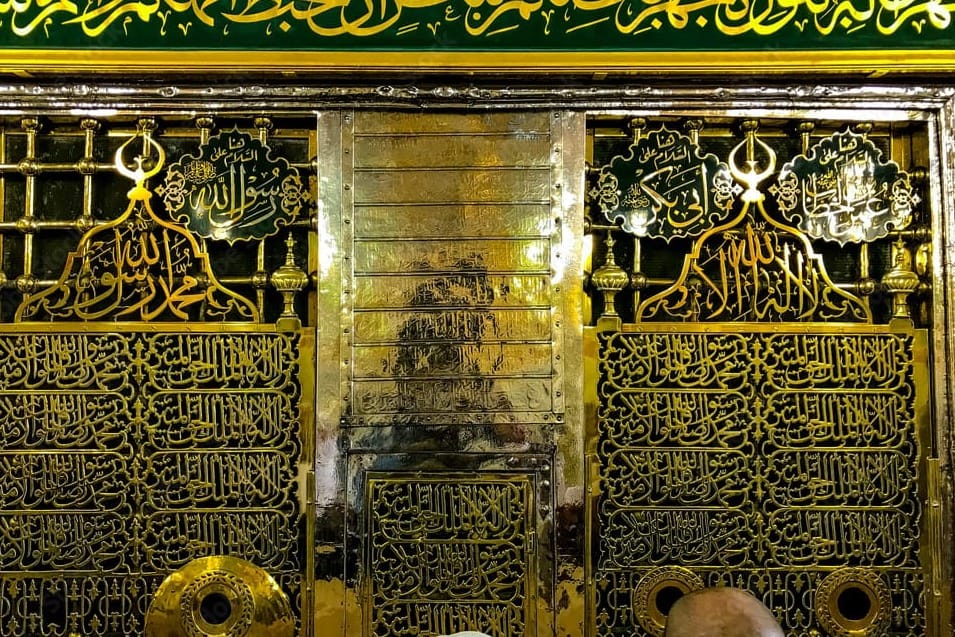
Mosque Etiquette 101
This isn’t just a historical site—it’s a place of worship. Here’s how to be a good guest in Masjid-e-Nabawi:
✅ Do
- Keep your phone on silent.
- Sit quietly or engage in dhikr (remembrance).
- Offer extra prayers, read Qur’an, or simply reflect.
❌ Don’t
- Take photos, especially near the Rawdah or the Prophet’s grave.
- Speak loudly or use phones for calls.
- Save spots for others—it’s first-come, first-serve.
Hidden Gems Inside Masjid al Nabawi
There’s more to Masjid al Nabawi than the Rawdah and the Green Dome. For those who take the time to explore (or simply look up!), the mosque is full of beautiful details, historic elements, and peaceful corners that enhance your visit in ways you might not expect.
Whether you’re staying for a few hours or several days, here are some hidden (but popular) gems to look out for:
The Giant Umbrellas
One of the most iconic modern additions to A Nabawi is the automated umbrella system in the courtyard. These umbrellas bloom open every morning and close in the evening, providing shade and comfort to thousands of worshippers.
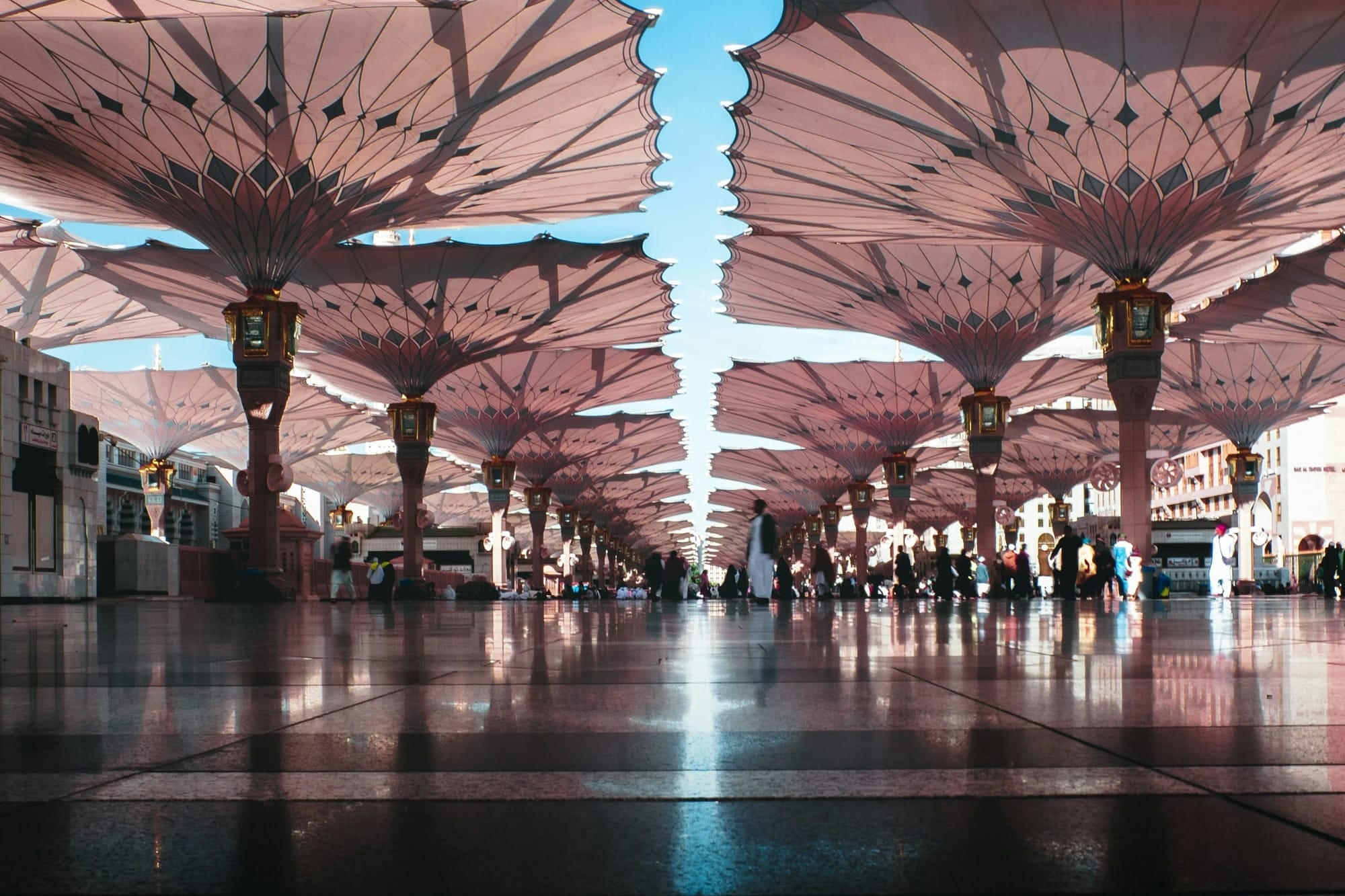
- Open Time: Typically, the umbrellas begin to open shortly after Fajr and close around Maghrib, though times may vary slightly with seasons and weather.
- Don’t miss seeing them in motion—it’s an incredible sight!
The Prophet’s Mosque Library
Located within the al Nabawi mosque complex on the western roof, this public Islamic library houses thousands of rare manuscripts, Qur’anic tafsir texts, and scholarly works. It’s a quiet spot perfect for reflection, reading, or simply soaking in the rich history of Islamic scholarship.
- Entry is free and open to all during regular mosque hours.
- Staff are helpful and may guide you to English-language materials or digital resources.
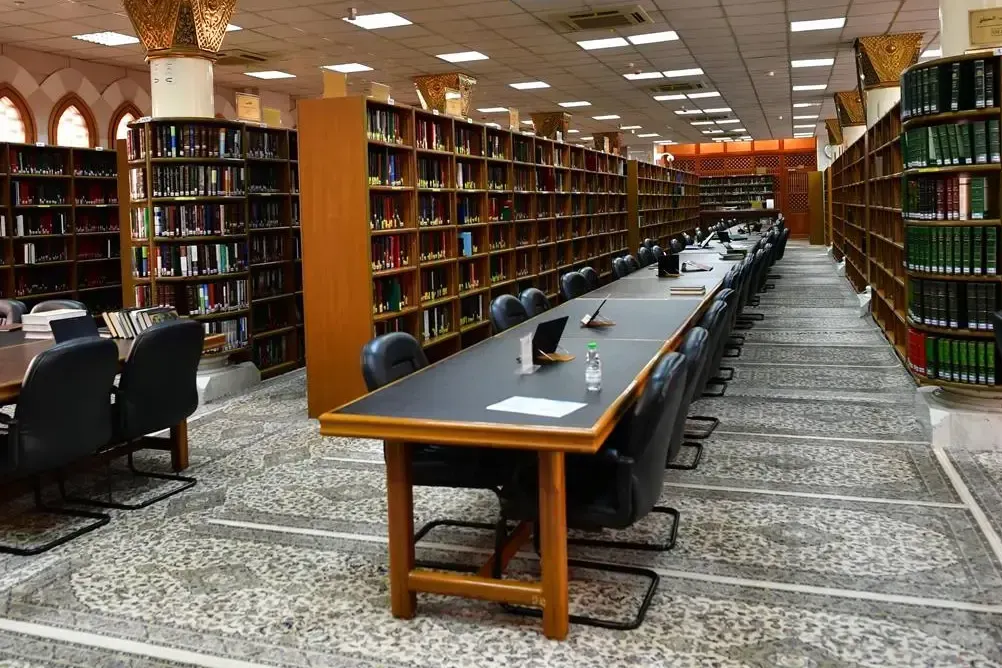
Don’t Miss: A Visit to Quba Masjid
Your spiritual journey in Madinah isn’t complete without a visit to Masjid Quba—the first mosque ever built in Islam.
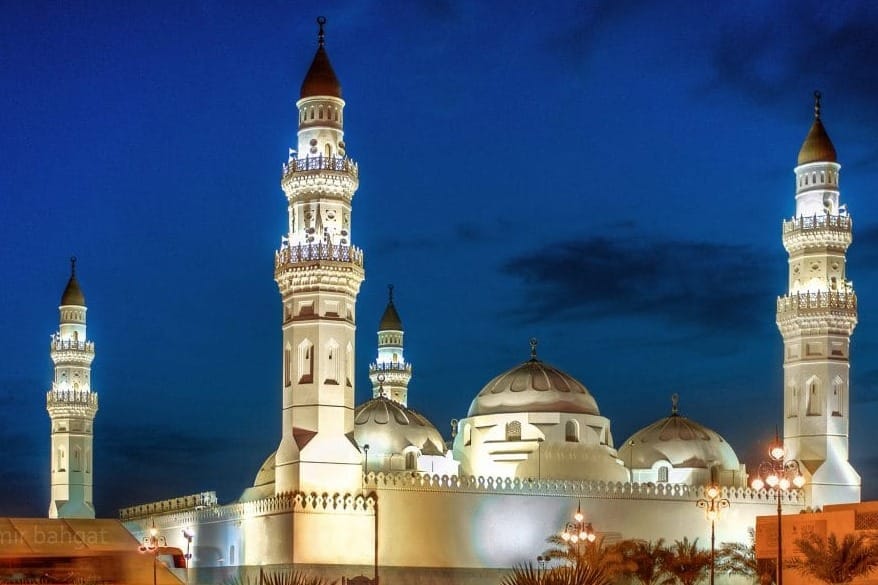
The Prophet (ﷺ) used to walk there every Saturday and said:
“Whoever makes ablution at home and then goes and prays in Masjid Quba, he will have a reward like that of Umrah.”
(Tirmidhi)
How to Get There
- Location: About 6 km from Masjid al Nabawi
- Transport: Taxi, ride-share apps, or hop aboard the Madinah Hop-On Hop-Off bus, which conveniently stops right outside the mosque.
- Best Time to Visit: Early morning to avoid crowds and heat
This mosque is peaceful, easy to access, and deeply significant—making it a must-see.
Other Ziyarat Spots Around Al Nabawi Mosque
While you're in Madinah, take some time to explore these spiritually enriching locations:
Uhud Mountain (Jabal Uhud)
Site of the famous Battle of Uhud , where many Sahabah gave their lives. You can visit the graves of the martyrs and reflect on their sacrifices.
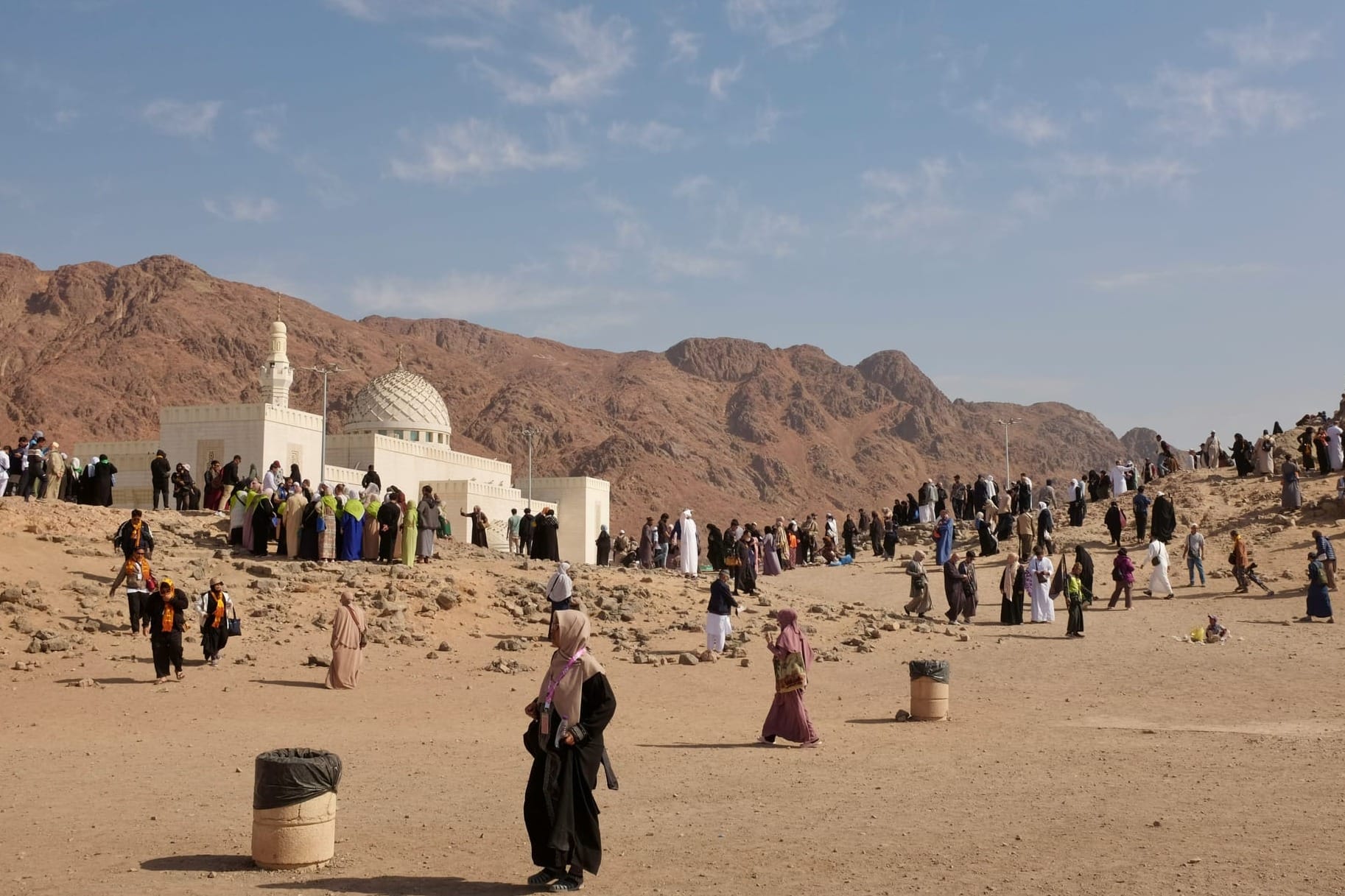
Masjid al-Qiblatain
Known as the Mosque of Two Qiblahs, this is where the Qiblah was changed from Jerusalem to Makkah during prayer.
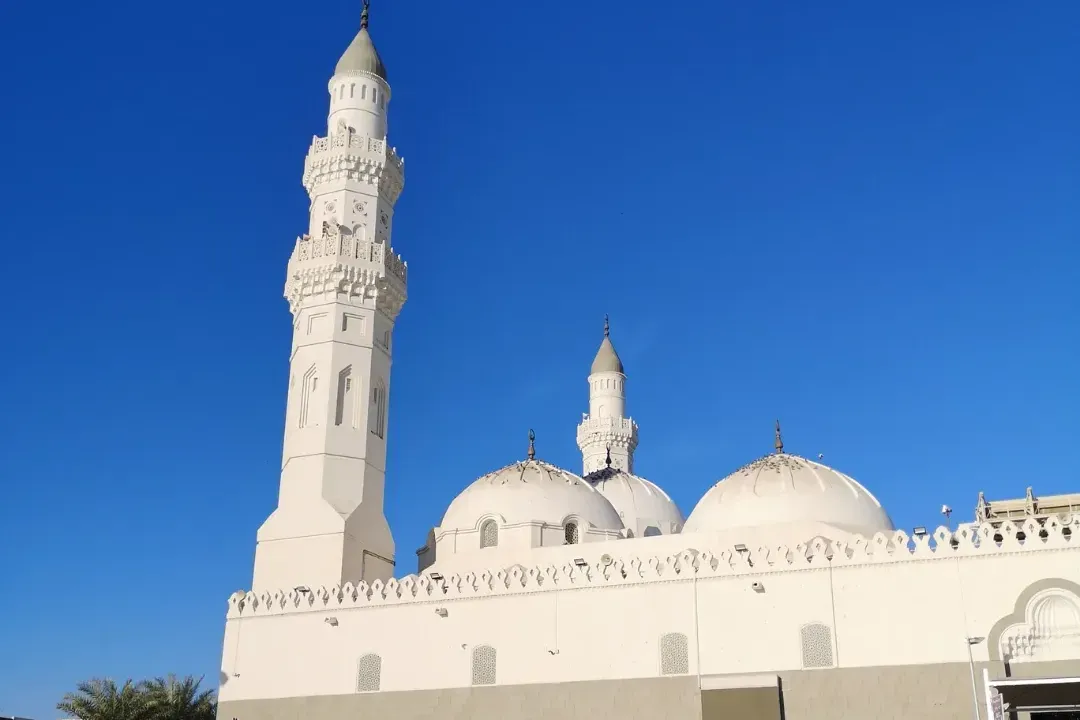
Baqi Cemetery (Jannatul Baqi)
This is where many family members of the Prophet (ﷺ) and companions are buried. Entry for women is currently restricted, but viewing from the outside is common.
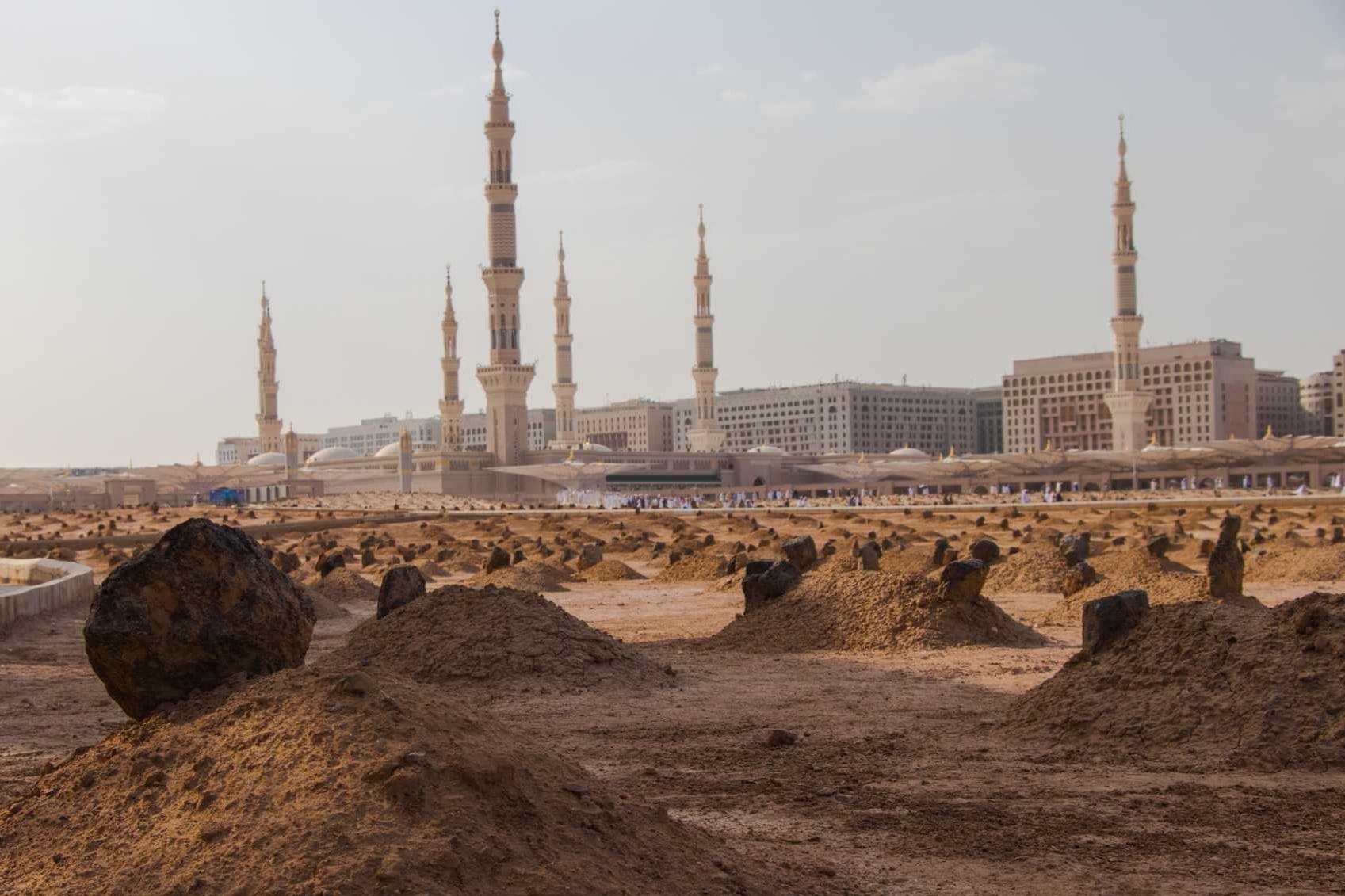
Final Thoughts: Let It Change You
A visit to Al Nabawi Mosque is not just about rituals—it’s about transformation.
Let your time in Madinah soften your heart. Let it fill you with peace. Let it inspire you to live with more purpose, more kindness, and more connection to your Creator.
Until we meet again in the City of Light—Madinah. May your heart always return!

